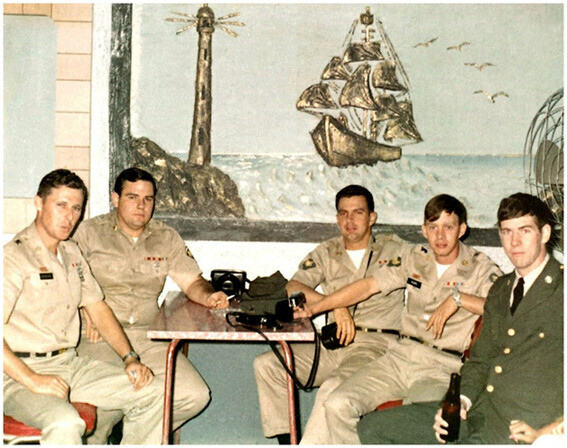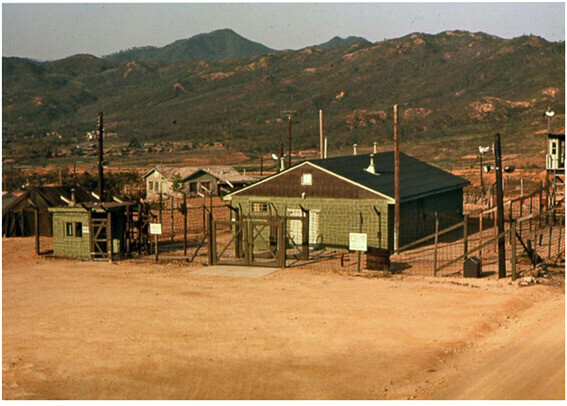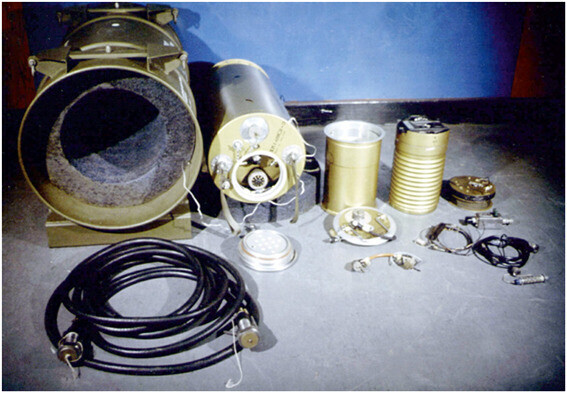hankyoreh
Links to other country sites 다른 나라 사이트 링크
US planned to nuke Han River bridges in event of N. Korean invasion in ’60s

A new account indicates that, in the 1960s, the US had an operational plan in place to destroy all bridges spanning the Han River with tactical nuclear weapons in order to prevent North Korean troops from advancing southward in case war were to break out once more on the Korean Peninsula.
Michael Roach, who served in the US Forces Korea (USFK) as an atomic demolition munitions engineer from 1968 to 1969, shared his story in an autobiographical essay titled “The Crossroads of Atomic Warfare in One Family” published on the website of the Nautilus Institute on Aug. 6.
The essay was published simultaneously by the Asia-Pacific Leadership Network and by the Research Center for Nuclear Weapons Abolition at Nagasaki University. The story went up on the 77th anniversary of the dropping of the atomic bomb on Hiroshima on Aug. 6, 1945.

Although US deployment of tactical atomic weapons to the USFK during the Cold War is already a known fact thanks to various testimonies and documents, this essay marks the first public account of this by an individual who actually served in the USFK’s tactical atomic weapons unit.
The US first brought tactical nuclear weapons to the Korean Peninsula back in January 1958. The USFK maintained these weapons in their possession and under their management until President George H.W. Bush’s secret order to withdraw these weapons from South Korea on Sept. 27, 1991.
According to the essay, from 1968-69, Roach was part of the USFK Atomic Demolition Munitions (ADM) platoon based at Camp Stanley, located on the outskirts of Uijeongbu.

ADM devices are often called nuclear “backpacks” or nuclear “mines" and have an explosion capability equivalent to 10 kilotons of TNT — comparable to the power of the nuclear bomb that was dropped on Hiroshima.
The years 1968-69, when Roach served in the USFK, have gone down in history as the period when the Korean Peninsula was the closest to war after the Korean War due to the attempted assassination of then-President Park Chung-hee by Kim Shin-jo, the Uljin–Samcheok landings by North Korea, and the capture of the USS Pueblo by North Korea.
At that time, according to the top secret “American Plan,” the USFK intended to slow the North Korean army’s advance south of the Han River by blowing up the large bridges spanning the river with tactical nuclear bombs if war broke out on the Korean Peninsula again. Roach said that his unit's mission included “destroying industrial scale bridges and breaking up airport runways.”

“If we had detonated even one bomb for a bridge, civilian casualties were estimated to be comparable to those of Hiroshima, on the order of [70,000]-80,000 deaths just from initial blast and thermal radiation,” Roach stated in the essay.
“In the 1960s, the US military actively pursued a defensive strategy based on the deployment of tactical atomic bombs. Their main utility was to temporarily (two weeks or so) block armored columns of overwhelming Soviet forces or Chinese-North Koreans,” Roach explained.
Roach went on to say how his platoon was “the last link in a long chain of command from the President to Commander-in-Chief Pacific to Commander of I Corps Korea to the 36th Engineering Group to the 11th Engineering Battalion to our ‘B’ Company and, finally, to our ADM platoon.”

Roach, whose family has lived in Janesville, Wisconsin, for five generations, also shared an unpublished photo his father kept during his lifetime. Roach’s father served in the Signal Corps of the US Army and was in the radar equipment unit that supported the US bomber B-29 Enola Gay which dropped the nuclear bomb on Hiroshima. The picture his father had shows handwriting on the side of the Enola Gay cockpit that reads “First Atomic Bomb Hiroshima — August 6, 1945.”
Roach said his father was “very proud of his service in helping to carry out a small part in the atomic bombing missions over Japan that ended the war,” but adds that he himself was still “troubled” by his work in the USFK ADM platoon.

“I am still troubled by the thought that I came so close to such a momentous decision as personally detonating an atomic bomb in a densely populated metropolis on so little historical knowledge and justification,” Roach says. “That concern has sent me on a lifetime of learning history and trying to create a more just and equitable world.”
By Lee Je-hun, senior staff writer
Please direct questions or comments to [english@hani.co.kr]

Editorial・opinion
![[Column] Park Geun-hye déjà vu in Yoon Suk-yeol [Column] Park Geun-hye déjà vu in Yoon Suk-yeol](https://flexible.img.hani.co.kr/flexible/normal/500/300/imgdb/original/2024/0424/651713945113788.jpg) [Column] Park Geun-hye déjà vu in Yoon Suk-yeol
[Column] Park Geun-hye déjà vu in Yoon Suk-yeol![[Editorial] New weight of N. Korea’s nuclear threats makes dialogue all the more urgent [Editorial] New weight of N. Korea’s nuclear threats makes dialogue all the more urgent](https://flexible.img.hani.co.kr/flexible/normal/500/300/imgdb/original/2024/0424/7317139454662664.jpg) [Editorial] New weight of N. Korea’s nuclear threats makes dialogue all the more urgent
[Editorial] New weight of N. Korea’s nuclear threats makes dialogue all the more urgent- [Guest essay] The real reason Korea’s new right wants to dub Rhee a founding father
- [Column] ‘Choson’: Is it time we start referring to N. Korea in its own terms?
- [Editorial] Japan’s rewriting of history with Korea has gone too far
- [Column] The president’s questionable capacity for dialogue
- [Column] Are chaebol firms just pizza pies for families to divvy up as they please?
- [Column] Has Korea, too, crossed the Rubicon on China?
- [Correspondent’s column] In Japan’s alliance with US, echoes of its past alliances with UK
- [Editorial] Does Yoon think the Korean public is wrong?
Most viewed articles
- 1[Column] Park Geun-hye déjà vu in Yoon Suk-yeol
- 2Thursday to mark start of resignations by senior doctors amid standoff with government
- 3Will NewJeans end up collateral damage in internal feud at K-pop juggernaut Hybe?
- 4[Guest essay] The real reason Korea’s new right wants to dub Rhee a founding father
- 5Why Korea shouldn’t welcome Japan’s newly beefed up defense cooperation with US
- 6[Editorial] New weight of N. Korea’s nuclear threats makes dialogue all the more urgent
- 7Kim Jong-un expressed ‘satisfaction’ with nuclear counterstrike drill directed at South
- 8[Column] ‘Choson’: Is it time we start referring to N. Korea in its own terms?
- 9N. Korean hackers breached 10 defense contractors in South for months, police say
- 10‘We must say no’: Seoul defense chief on Korean, USFK involvement in hypothetical Taiwan crisis